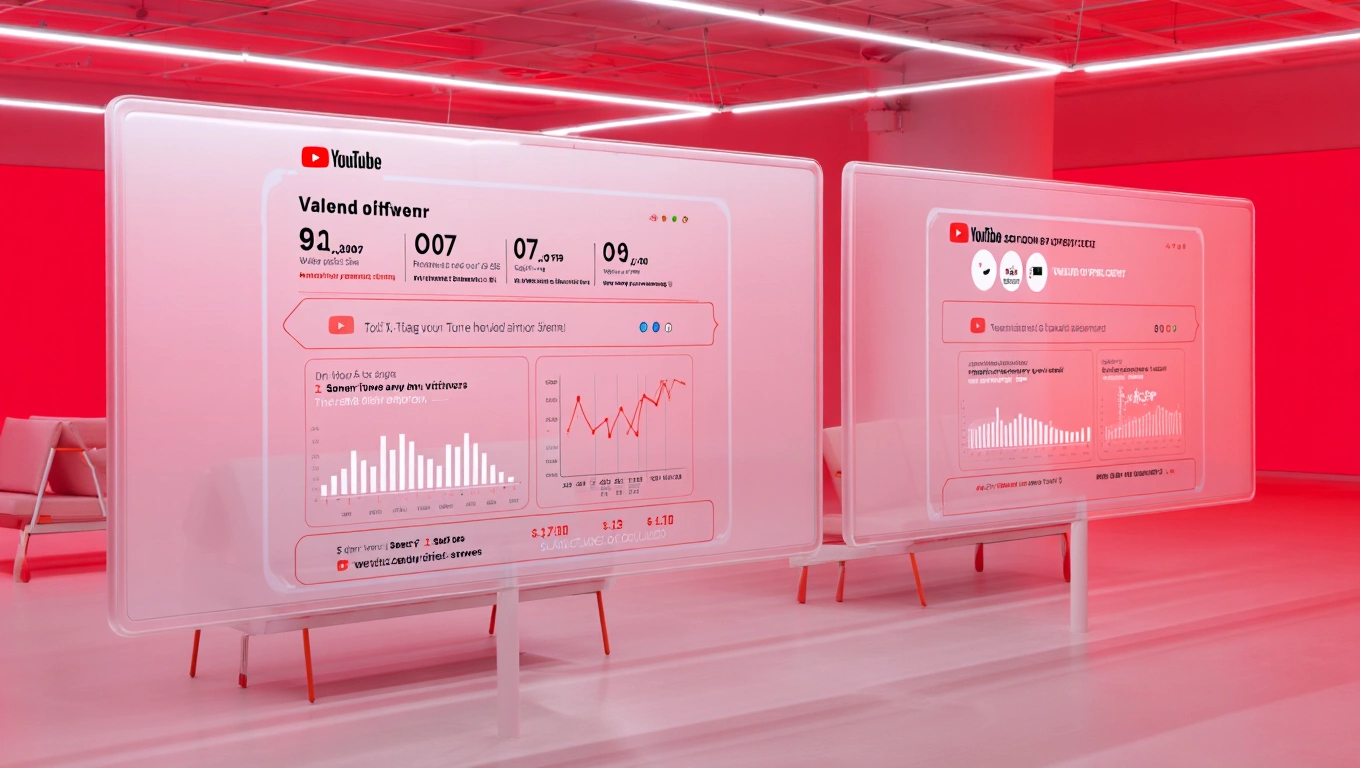YouTube SEO 2025: Ultimate Guide to Growing and Ranking Your Channel
With over 1,200 videos uploaded every minute and algorithms evolving quarterly, mastering YouTube SEO in 2025 goes far beyond sprinkling keywords in your title. It’s about optimizing for search, recommendations, and viewer retention with a holistic, data-driven approach.
In this guide, you’ll learn:
- Cutting-edge keyword research & trend spotting
- Metadata mastery: titles, descriptions & tags
- Thumbnail design & first-impression tactics
- Engagement hacking: comments, likes & watch-time
- Cross-platform promotion & collaboration strategies
- Analytics deep dive & iterative testing
- Tools, automation & AI-powered workflows
- A step-by-step “Launch & Scale” 2025 action plan
Let’s dive in.
1. Next-Gen Keyword Research & Trend Spotting
Why It Matters in 2025
YouTube’s search is now powered by conversational AI—the platform interprets intent, not just literal matches. Targeting long-tail, context-rich queries puts you ahead.
Techniques & Tools
- Autocomplete + AI Prompting: Type your seed topic into YouTube’s search bar, note autocomplete suggestions, then refine with ChatGPT or Gemini:
Prompt: “Generate 20 YouTube video ideas about sustainable travel that users search in 2025.”
- Google Trends & Exploding Topics: Compare related queries, filter by region and category, and spot rising “micro-niches” before they peak.
- VidIQ/TubeBuddy Trend Alerts: Set real-time alerts for surges in your topic area—perfect for jumping on hot memes or breaking news.
- Community Insights: Monitor Reddit, Discord and niche forums; export common questions into a “question bank” to address in video scripts.
Pro Tip: Build a living spreadsheet with columns: Keyword, Monthly Search Volume (YouTube API), Trend Velocity (10-point scale), Intent (Informational/How-To/Product/Opinion).
2. Metadata Mastery: Titles, Descriptions & Tags
Titles: Balance Clarity & Curiosity
- Structure: Primary keyword + compelling hook.
- Example: “Eco-Travel Hacks 2025: Save Money, Reduce Waste, Travel Smarter”
- Length: 50–60 characters to avoid truncation on mobile.
- Power Words & Emojis: Use sparingly to boost CTR (“How To 🔥”, “Top 5⚡”).
Descriptions: Optimize for AI & Humans
- First 150 Characters: Include your main keyword and a clear value proposition (“Learn the 7 latest eco-travel tips that save you $500 and cut carbon footprints in half.”).
- Chapters & Timestamps: Break down your video into 3–6 sections; improves watch-time by letting viewers jump in.
- CTA & Links: Ask viewers to like and subscribe, then link to related videos, playlists, and social channels.
- Hashtags: 3–5 relevant tags (#EcoTravel2025, #SustainableHacks). Too many dilutes focus.
Tags: Use Smart Variations
- Exact Match: Your primary keyword.
- LSI Tags: Semantic phrases (“sustainable travel tips,” “eco-friendly vacations 2025”).
- Competitor Tags: Grab a few high-volume tags from top videos (via TubeBuddy).
3. Thumbnail Design & First-Impression Tactics
Your thumbnail is your billboard. In 2025, attention spans are 1.7 seconds—make them count.
- High-Contrast Colors: Stand out in the feed. Use brand-aligned palettes but don’t blend in.
- Minimal Text (3–4 Words): Big, bold, easy to read on mobile.
- Expressive Faces & Emotions: Research shows thumbnails with clear expressions gain +20% CTR.
- Consistent Branding: A small, unobtrusive logo or frame design builds channel recognition.
- A/B Testing: Use VidIQ’s thumbnail split tests to refine color, text placement, and imagery.
Quick Workflow:
- Sketch thumbnail concepts in Figma.
- Export 2–3 designs to TubeBuddy for split testing.
- Analyze CTR lift after 1000 impressions; pick the winner.
4. Engagement Hacking: Comments, Likes & Watch-Time
YouTube’s algorithm prioritizes signals that demonstrate viewer satisfaction: likes, comments, shares, and, most importantly, average view duration.
Boost Comments & Interaction
- Pinned First Comment: Ask a question (“Which tip resonated most? Drop a 🔥 if you’ll try tip #3!”).
- Community Tabs & Polls: Engage subscribers with polls related to upcoming videos.
- Reply Quickly: First 24 hours of comments are critical; aim to respond within minutes.
Maximize Watch-Time
- Intriguing Hook (0–15s): Promise a juicy insight or show the result first.
- Pattern Interrupts: Every 60–90 seconds, switch visuals or introduce a graphic overlay to re-engage.
- End Screens & Cards: Promote next videos contextually—don’t just stick a generic “Watch next” screen.
Retention Checklist:
- Hook: 30s
- First Value Drop: 2min
- Mid-video Prompt: 5min
- Sneak Peak at Value 2: 8min
- Strong CTA & Playlist Suggestion: Last 30s
5. Cross-Platform Promotion & Collaboration
Expanding your reach beyond YouTube accelerates growth:
- Short-Form Teasers: Clip 30–60s highlights for TikTok, Instagram Reels, and YouTube Shorts—link to full video.
- Guest Spot & Collabs: Team up with 1–2 creators per quarter; aim for adjacent niches to tap new audiences.
- Email & Newsletter Blasts: Embed video previews in weekly newsletters. Curate “Top 3 videos of the week.”
- Playlists & Series: Group related videos into binge-worthy series; share the series link on your blog and social.
Collab Checklist:
- Identify potential partners (similar audience size + complementary topic).
- Propose value-exchange: share analytics, co-creative brief.
- Record together (remote or in-person).
- Cross-promote in descriptions, cards, and social.
6. Analytics Deep Dive & Iterative Testing
Data is your compass. Use YouTube Analytics, Google Analytics 4, and third-party dashboards:
- Traffic Sources: Identify which keywords, playlists, or external sites bring the most viewers.
- Audience Demographics & Behavior: Tailor content length, style, and topics to your core viewers’ age, location, and watch habits.
- Engagement vs. Drop-Off: Use the “Audience Retention” graph to pinpoint where viewers leave—then A/B test content around those timestamps.
- Revenue Streams: If monetized, compare CPM across video types and optimize for high-CPM niches (finance, B2B, tech reviews).
Experiment Log: Maintain a “testing tracker” with columns: Experiment Name, Hypothesis, Variations, Metrics (CTR, Watch-Time), Outcome, Next Steps.
7. Tools, Automation & AI-Powered Workflows
Leverage modern tools to scale:
- TubeBuddy & VidIQ: Keyword research, tag suggestions, thumbnail tests.
- ChatGPT/Gemini Prompts: Generate video scripts, description drafts, and comment replies at scale.
Prompt: “Write a 250-word video description for an eco-travel hacks video targeting beginner travelers in 2025.”
- Hootsuite/Buffer: Schedule cross-platform promotions.
- Zapier/Make.com: Automate new video announcements to Discord, Slack, and email.
- Descript: AI-powered transcription and video editing, perfect for quick subtitles and highlights.
8. 2025 Action Plan: Launch & Scale in 8 Weeks
| Week | Focus Area | Deliverable |
|---|---|---|
| 1 | Keyword & Trend Research | 20 validated video topics + spreadsheet |
| 2 | Content Planning & Scripting | Scripts for first 4 videos |
| 3 | Filming & Editing Setup | Batch film 4 videos, set up templates in Descript |
| 4 | Metadata & Thumbnail Creation | Design A/B thumbnail tests, finalize metadata |
| 5 | Publish & Initial Promotion | Publish 2 videos, announce on 3 social platforms |
| 6 | Engagement Blitz | Reply to all comments, launch community poll |
| 7 | Analytics & Iteration | Review retention graphs, adjust content flow |
| 8 | Collaboration & Expansion | Publish guest collab video + cross-promo checklist |
Conclusion
YouTube in 2025 rewards creators who blend data-driven rigor with human creativity. By mastering advanced keyword research, metadata optimization, engagement hacking, and cross-platform promotion—powered by AI-assisted workflows—you’ll stand out in a crowded field and drive sustained growth.
Now it’s your turn. Pick one section above, start implementing today, and watch your channel climb the ranks.

